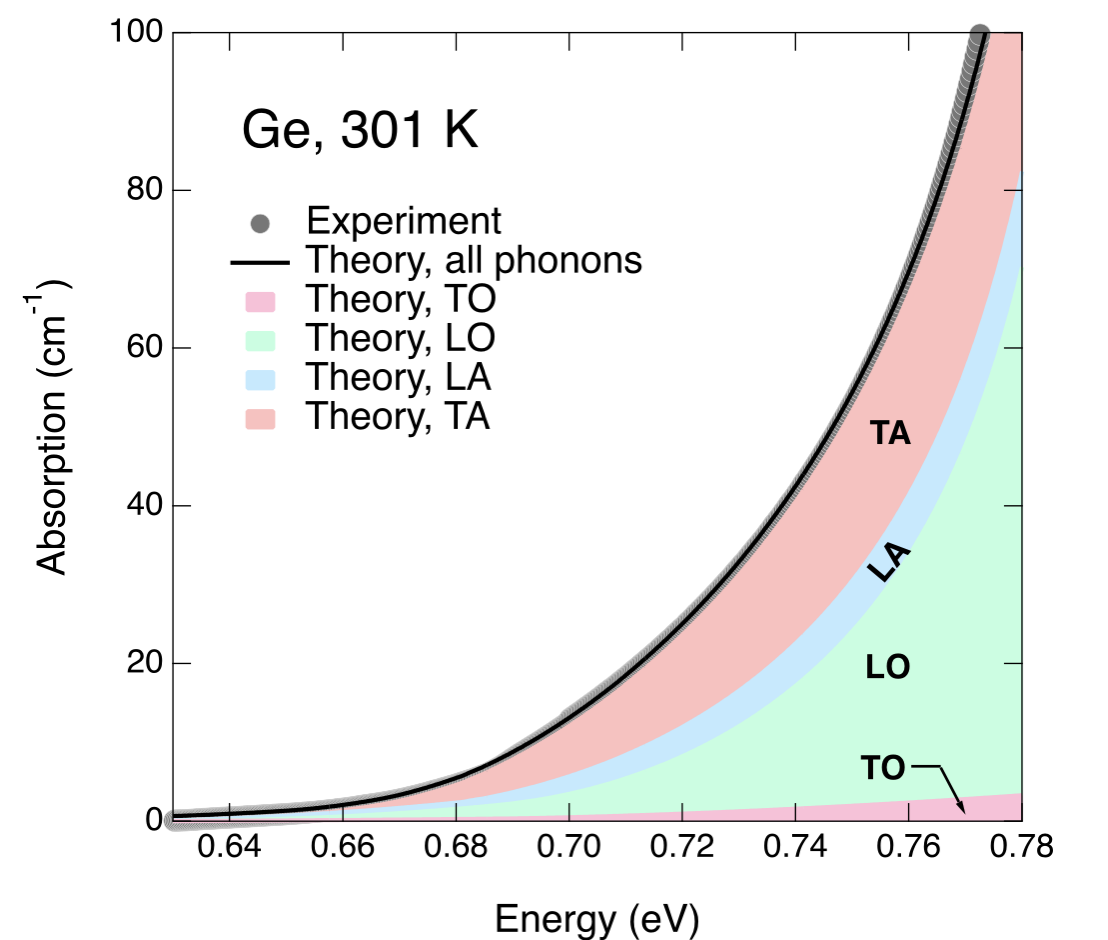Excitonic Effects at the Direct Bandgap of Germanium
The divergence of the indirect absorption leads to the paradoxical conclusion that in the immediate vicinity of the direct gap, indirect absorption could become stronger than direct absorption. Eliminating this inconsistency requires a new theory of indirect absorption, which is one of the primary goals of this DMREF project.
C. Emminger, N. S. Samarasingha, M. R. Arias, F. Abadizaman, J. Menendez, and S. Zollner

Indirect gap light absorption in semiconductors is mediated by direct gap transitions. The energy difference between the incident photon and the direct gap appears in the denominator of the theoretical expressions for the indirect gap absorption strength. In quasi-direct semiconductors, the direct band gap is only slightly above the indirect gap, and the denominator approaches zero. Examples of quasi-direct semiconductors include germanium and many 2D materials.
The divergence of the indirect absorption (see figure) leads to the paradoxical conclusion that in the immediate vicinity of the direct gap, indirect absorption could become stronger than direct absorption. Eliminating this inconsistency requires a new theory of indirect absorption, which is one of the primary goals of this DMREF project.
We started the experimental part of the project by attempting to quantify the accuracy of the direct gap expressions for predicting the dielectric function of Ge near its direct gap. This work was done in collaboration with the group of Stefan Zollner at NMSU.